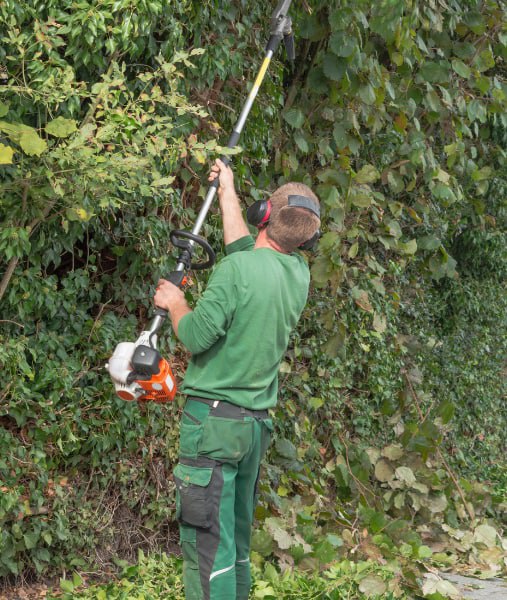Caring for trees is more than just ensuring they grow tall and strong. For many trees, especially those in areas prone to high winds, proper management can significantly enhance their resilience and longevity. Two key techniques that play a vital role in this process are tree crown reduction and wind sculpting. At Gillingham Tree Surgeons, we specialise in these services to help homeowners in Gillingham, Kent, maintain healthy and robust trees that can withstand the natural elements. In this blog post, we’ll explore the importance of crown reduction and wind sculpting, and how these practices can create more resilient landscapes.
1. Understanding Tree Crown Reduction
Tree crown reduction is a method of pruning that involves removing specific branches and limbs from the top of the tree to reduce its height or spread. This technique is particularly useful when trees have become too large for their surroundings or when there’s a need to prevent them from interfering with nearby structures such as buildings or power lines.
- What It Does: By reducing the overall size of the tree’s crown, you decrease the wind resistance. This means that during strong winds, the tree is less likely to sway excessively or suffer damage such as broken branches or uprooting.
- Why It Matters: In areas like Gillingham, where storms and high winds can cause havoc, crown reduction can protect your trees from the damaging effects of strong winds, ensuring that they remain safe and healthy.
2. The Art of Wind Sculpting
Wind sculpting is a more advanced technique used to shape trees in a way that allows them to withstand high winds. By selectively pruning certain branches, the tree can better channel wind through its canopy, reducing strain on its structure. This helps prevent wind damage and promotes healthier growth.
- What It Does: Wind sculpting ensures that the tree’s structure is aerodynamically sound, allowing winds to pass through without creating excessive pressure on the branches and trunk.
- Why It Matters: Trees that are overly dense or top-heavy are more vulnerable to wind damage. Wind sculpting helps distribute the tree’s weight more evenly, improving its stability during storms.
3. Enhancing Tree Health and Longevity
Both crown reduction and wind sculpting contribute to the overall health of your trees. By removing excess or weakened branches, these techniques allow more sunlight and air to circulate through the canopy, reducing the risk of disease and promoting vigorous growth.
- What It Does: Thinning out the crown encourages stronger growth in the remaining branches, making the tree more resilient to environmental stresses such as high winds, drought, and pest infestations.
- Why It Matters: Healthier trees are better equipped to endure tough conditions and recover more quickly from potential damage. Regular pruning through crown reduction and wind sculpting can significantly extend the life of your trees.
4. Protecting Your Property
While healthy trees enhance the beauty of your landscape, they can also pose risks if not properly maintained. Overgrown or weakened trees are more likely to lose branches or even topple over during storms, potentially causing damage to your property or neighbouring structures.
- What It Does: Crown reduction and wind sculpting reduce the likelihood of falling branches, protecting your home, garden, and surrounding areas from storm damage.
- Why It Matters: Investing in regular tree maintenance can save you from costly repairs and prevent accidents that may result from falling limbs or uprooted trees.
5. Aesthetic Benefits
Beyond their practical benefits, crown reduction and wind sculpting also enhance the appearance of your trees. These techniques allow you to shape the tree to complement the design of your garden, ensuring it remains a focal point in your landscape without overpowering the space.
- What It Does: Well-maintained trees look neater, more balanced, and aesthetically pleasing. This adds value to your property and creates a more harmonious outdoor environment.
- Why It Matters: A well-groomed tree not only benefits your landscape’s functionality but also improves its visual appeal, making your outdoor space a place of beauty and serenity.
Conclusion
Tree crown reduction and wind sculpting are essential techniques for creating resilient and beautiful landscapes in areas like Gillingham, Kent. By ensuring that your trees are properly pruned and shaped, you can protect them from the damaging effects of high winds, promote healthy growth, and safeguard your property. At Gillingham Tree Surgeons, we specialise in these services, helping homeowners maintain strong, attractive, and safe trees.
If you’re concerned about the health and safety of your trees, or if you want to learn more about how crown reduction and wind sculpting can benefit your landscape, contact us today to schedule a consultation. Let us help you craft a resilient, wind-resistant landscape that enhances the beauty and safety of your home.
Call us on: 01634 564 698
Click here to find out more about Gillingham Tree Surgeons
Click here to complete our contact form and see how we can help with your tree care needs.
